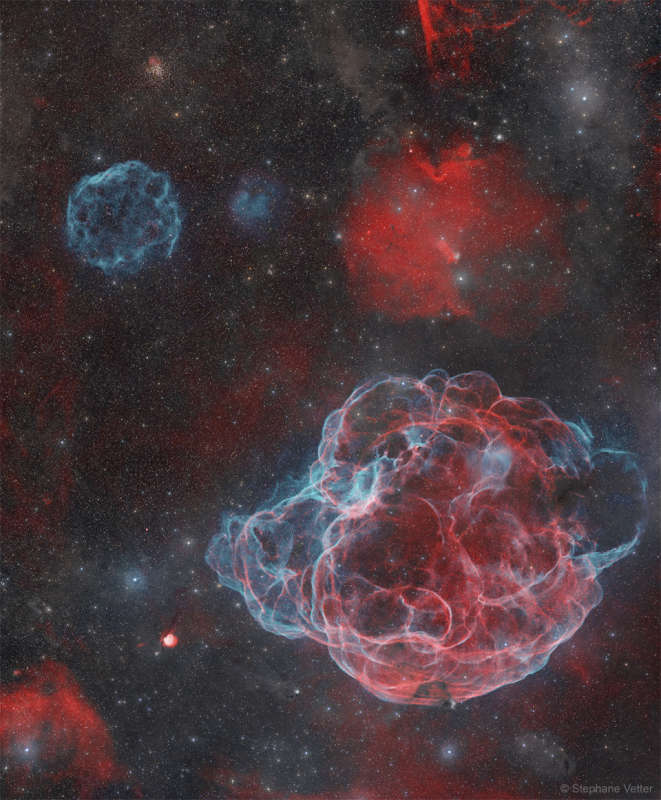Credit & Copyright: Stéphane Vetter
(Nuits sacrées)
Explanation:
What happens after a star explodes?
A huge fireball
of hot gas shoots out in all directions.
When this gas slams into the existing
interstellar medium,
it heats up so much it glows.
Two different
supernova remnants (SNRs)
are visible in the featured image, taken at the
Oukacmeden
Observatory in
Morocco.
The
blue soccer ball-looking nebula toward the upper left is
SNR G179.0+02.6, which appears to be the smaller one.
This supernova, about 11,000 light years distant,
detonated about 50,000 years ago.
Although composed mostly of
hydrogen gas, the blue light is emitted by a trace amount of
oxygen.
The seemingly larger SNR, dominating the lower right of the frame, is the
Spaghetti Nebula, cataloged as
Simeis 147 and sh2-240.
This supernova, only about 3,000
light years away, exploded about 40,000 years ago.
Comparatively, even though they appear different sizes, both supernova remnants
are not only roughly the same age, but about the same size, too.
1999 2000 2001 2002 2003 2004 2005 2006 2007 2008 2009 2010 2011 2012 2013 2014 2015 2016 2017 2018 2019 2020 2021 2022 2023 2024 2025 |
Yanvar' Fevral' Mart Aprel' Mai Iyun' Iyul' Avgust Sentyabr' Oktyabr' Noyabr' Dekabr' |
NASA Web Site Statements, Warnings, and Disclaimers
NASA Official: Jay Norris. Specific rights apply.
A service of: LHEA at NASA / GSFC
& Michigan Tech. U.
|
Publikacii s klyuchevymi slovami:
supernova remnant - ostatok Sverhnovoi
Publikacii so slovami: supernova remnant - ostatok Sverhnovoi | |
Sm. takzhe:
Vse publikacii na tu zhe temu >> | |
